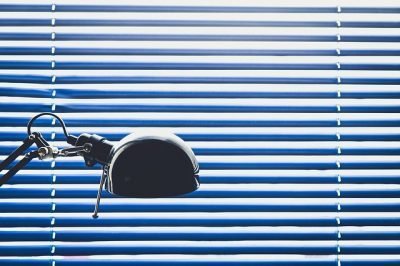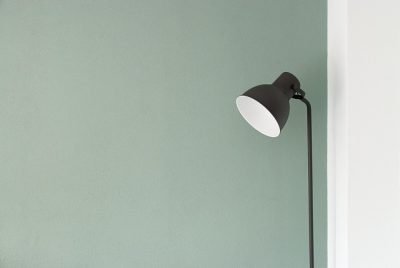Eye fatigue isn’t an uncommon condition – what with the increasing time we spend attached to computer screens and laptops, it’s rather inevitable. Characterized by symptoms such as soreness, irritability or dryness of the eyes, sensitivity to light and blurred or double vision, over-exposure to digital devices is, however, only a subcategory of the main reason behind eye fatigue – lighting.
Be it the glare of an open window directly facing us, the straining of our eyes in dim lighting, or the imbalance between our laptop screen brightness and overhead fluorescent lightbulbs, lighting conditions are one of the main – if not the main – culprits behind eye strain or fatigue.
And a well-thought-out lamp might be the solution we need to combat it.
How does lighting correlate to eye fatigue?

Contrary to popular belief and cautionary tales rife in our childhood, our vision does not worsen from reading in dim lighting. Similarly, the reverse holds true – staring into a light emitting object, be it a computer screen, a smartphone or a Kindle – also doesn’t impact vision in a lasting detrimental way.
The effect both excesses do have, though, is the strain they put on your eyes. In both situations, your eyes are working overtime to process what they’re seeing. In dim lighting, they strain to make out words, the details of your crocheting or cross-stitching, the facets of the miniature you’re painting. Meanwhile, studies have indicated that when you’re staring at a screen, working on your computer or texting on your phone, you tend to blink less, giving your eyes fewer chances to rest and relax. We also typically hold digital devices closer to us than we do books or other material we’re working with. Think of all the time you’ve held your phone up to your face watching cat videos or scrolling through a handful of social media accounts, and the amount of light and ultraviolet rays you’ve subsequently been exposed to in that time, and instances of eye fatigue will make more sense.
Bright or harsh ambient lighting can contribute to the problem. Reflections off walls, windows and your computer screen and the glare of overhead lights often mean your eyes are having to work harder than they should have to. On the other hand, an imbalance between the brightness of your screen and your environment can also cause or exacerbate eye fatigue – think about the sting you experience when the lights are suddenly switched on in your dark bedroom, or when someone shines a torch directly into your eyes. This phenomenon, known as discomfort glare, is pretty much what’s happening when you’re working facing a window pouring out stark daylight brighter than your computer screen, under harsh interior lighting, or even in a dark or dim room where you have to strain to see anything apart from your lit-up computer screen.
How does a lamp help reduce eye fatigue?

Of course, there are many precautions one can take to tone down the impact of eye fatigue. Installing anti-glare filters to computer screens and reducing screen brightness are some ways of avoiding discomfort, as well as mindfully keeping the time we spend on our gadgets down to a strictly necessary minimum.
But eye fatigue isn’t only linked to use of digital devices and screens. Reading, writing, embroidery, painting, crafts, woodwork, electronic repair, tattoo artistry – these are all just some examples of activities and professions that require a heightened degree of visual focus or reliance on our eyes. With the wrong sort of lighting, this also means excessive strain on our eyes.
This is where a lamp can help. Task lighting can make a notable difference to how comfortable your eyes are as you work – rather than the glare of a light directly in front of or behind you, a shaded task light or desk lamp throws focused light on to the object or task you’re working on, without making your eyes work harder to process what you’re seeing. The distance between your light source and workstation also comes into play – the distance between an open window or a bright overhead light and your desk or workstation is larger than the distance between a lamp poised directly over it. Naturally, then, task lighting better illuminates the labels of your homemade jam jars, the bits and bobs of the motherboard you’re taking apart or the minuscule, intricate details of your cross-stitching project compared to overhead lighting, by throwing tiny details into sharp relief without making your eyes work overtime or casting an uncomfortable glare.
Task lighting can even take the pressures off of working with a screen. Opting for a desk lamp or task light over fluorescent overhead lights or open windows gives you better control of ambient lighting – pull the curtains closed and switch off overhead lights in favor of a task light illuminating your desk and whatever you may need on it, and you won’t have to worry about glares and reflections from the surrounding environment. A bonus? You get to save a little on your utility bills while you’re at it.
What type of lamp is best for avoiding eye fatigue?

For starters, we want a lamp that highlights a specific area, rather than one that diffuses light in all directions. Lamps with opaque shades that direct the light to the desired point of focus are recommended over lamps with translucent shades that throw an ambient – and diluted – glow over the surrounding area. You want a light source that can be angled toward where it’s needed, and away from your direct line of sight, avoiding discomfort glare and unnecessary reflections. For a large desk or workstation or an activity requiring flexibility of movement, a lamp with a flexible arm can be a godsend – you can reposition the lamp to throw light where you need it when you need it, without having to squint in dim lighting or having to move the lamp itself.
Other features to keep in mind are the bulb type, brightness (measured in Lumens) and color temperature. Incandescent bulbs are slowly growing obsolete, while bright-white fluorescent bulbs, though energy-saving, can actually overstrain your eyes. We recommend Light Emitting Diodes or LED lightbulbs instead – despite the initial cost, these lights pay back for themselves in the long-run with their energy-saving capacities and are versatile in their range of color temperatures (referring to the color characteristics of light). Measured in Kelvins, warmer color temperatures (toward the red end of the spectrum) are typically better for relaxation and mood lighting than cooler color temperatures (toward the blue end of the spectrum), better for task lighting in any activity requiring attention to detail and intricate handiwork.